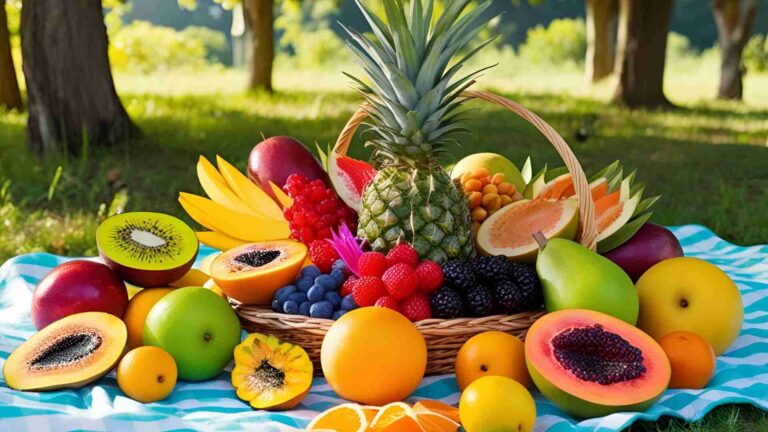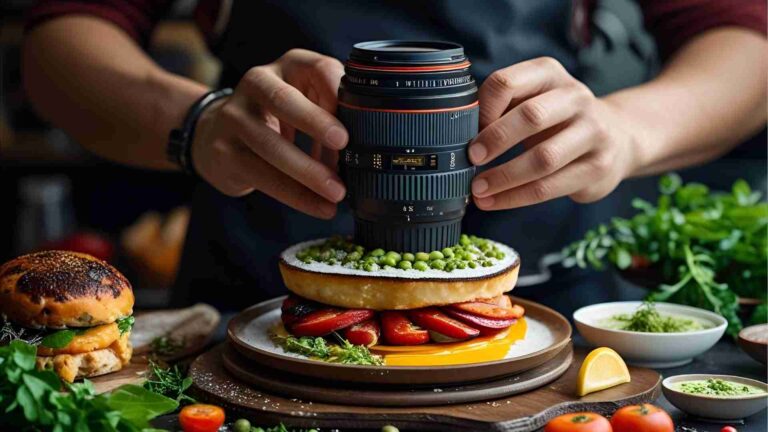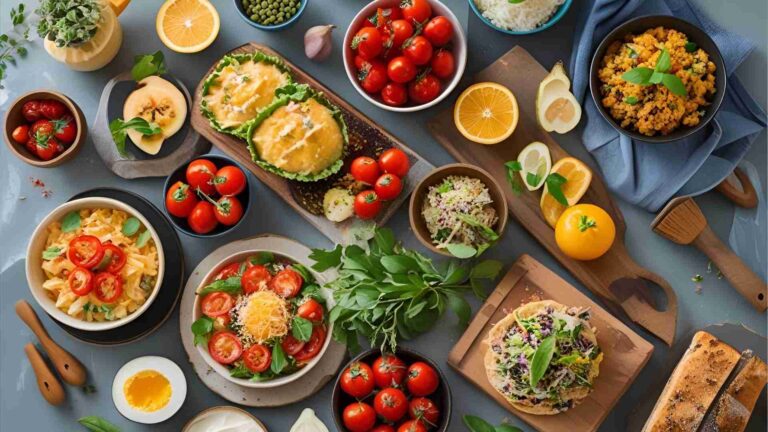How to Create Recipe PDF Books: 5 Steps
Learn how to create a recipe PDF book in 5 simple steps. Turn your favorite recipes into a shareable digital cookbook with our expert tips and tools.
Creating a recipe PDF book is a rewarding way to preserve culinary traditions, share your favorite dishes, or even grow your food blog audience. Whether you’re compiling family recipes for your kids or crafting a professional cookbook to sell online, a digital recipe book offers flexibility, eco-friendliness, and instant shareability. This guide walks you through the five essential steps to create a professional-looking recipe PDF book, from gathering recipes to sharing your masterpiece. We’ll cover the tools you need, practical tips, and technical know-how to ensure your cookbook is both beautiful and functional.
Why Recipe PDF Books Matter
Recipe books are more than just a collection of instructions—they’re a way to capture memories, share creativity, and bring people together through food. A digital recipe PDF book offers unique advantages:
- Instant Shareability: Send your cookbook to friends, family, or followers with a single click.
- Cost-Effective: No printing costs, making it budget-friendly.
- Easy Updates: Add new recipes or tweak existing ones without starting from scratch.
- Eco-Friendly: Save paper and reduce your environmental footprint.
Whether you’re a home cook preserving Grandma’s secret sauce or a food blogger building your brand, a recipe PDF book is a powerful tool. Let’s dive into the five steps to create one.
Tools You’ll Need
Before you start, gather the right tools to streamline the process. Here’s what you’ll need:
PDF Creation Software
To create a polished PDF, choose software that suits your skill level and needs. Below is a comparison of popular options:
| Software | Key Features | Best For | Pricing |
|---|---|---|---|
| Adobe Acrobat | Advanced editing, form creation, compression | Advanced users | $12.99-$19.99/month (Pro) |
| Canva | User-friendly, templates, drag-and-drop | Beginners, visual designers | Free; Pro: $12.99/month |
| FlipHTML5 | Easy conversion, free hosting, interactivity | Quick publishing, sharing | Free; Premium: $15/month |
- Adobe Acrobat: Ideal for those needing precise control over text, images, and security features like password protection.
- Canva: Perfect for beginners, offering over 500 cookbook templates and a vast library of stock photos.
- FlipHTML5: Great for interactive cookbooks with embedded videos or links, plus free hosting for easy sharing.
Recipe Management Software
Organize your recipes before turning them into a PDF. Popular options include:
- Recipe Kit: Best for food bloggers or e-commerce store owners. It creates SEO-optimized recipe cards and links ingredients to shoppable products.
- Paprika Recipe Manager: Excellent for saving recipes from the web and generating grocery lists.
- BigOven: With over 11 million users, it offers meal planning and grocery list features.
Design Tools
Your cookbook should look as appetizing as the dishes it features. Use these tools for stunning visuals:
- Canva: Drag-and-drop interface with customizable templates.
- Adobe InDesign: For complex layouts and professional-grade designs.
File Storage
Keep your files organized and accessible:
- Create a main folder (e.g., “Recipe PDF Book”).
- Use subfolders for categories like “Appetizers” or “Desserts.”
- Store files on cloud platforms like Google Drive or Dropbox for easy access and backups.
Step 1: Gather Your Recipes
The foundation of any great cookbook is its recipes. This step is about collecting and organizing your culinary treasures.
Choose Your Recipes
Select recipes based on your audience and purpose. For a family cookbook, include nostalgic dishes like Mom’s chili or Grandma’s apple pie. For a food blog, highlight recipes that reflect your unique style. Consider these factors:
- Popularity: Which dishes get the most compliments?
- Variety: Include a mix of appetizers, mains, desserts, and seasonal dishes.
- Balance: Offer both simple and complex recipes to appeal to all skill levels.
Set a Consistent Format
A uniform format makes your cookbook professional and easy to follow. Here’s a suggested recipe card layout:
| Section | Details |
|---|---|
| Title | Name of the dish |
| Servings | Number of people it serves |
| Prep Time | Time to prepare ingredients |
| Cook Time | Time to cook the dish |
| Ingredients | List with precise measurements |
| Instructions | Step-by-step cooking guide |
| Notes | Tips, variations, or dietary info |
Example Recipe Card (Diagram):

Digitize Paper Recipes
If you have handwritten recipes, convert them to digital format:
- Photograph: Use your smartphone to snap clear images.
- OCR Apps: Tools like Adobe Scan convert images to searchable text.
- Manual Entry: Type recipes into a Word document or recipe management app for precision.
To add a personal touch, include scanned images of handwritten recipes alongside the typed version.
Organize Your Content
Sort recipes into logical categories to improve navigation. Common groupings include:
- Meal Type: Breakfast, Lunch, Dinner, Desserts
- Cuisine: Italian, Mexican, Asian
- Occasion: Weeknight Dinners, Holiday Feasts
- Main Ingredient: Chicken, Beef, Vegetarian
Use tools like Evernote or Paprika to tag and sort recipes efficiently.
Pro Tip: A food blogger on X shared, “I organized my recipes by season and added a ‘Family Favorites’ section. It made my PDF cookbook feel personal and practical.”
Step 2: Plan Your Layout
A well-designed layout ensures your cookbook is both visually appealing and functional. Think of it as plating a dish—presentation matters.
Choose a Template
Select a template that matches your style. Canva offers over 500 cookbook templates, such as the “Rustic Recipe Book” for a cozy, homey vibe. Ensure the template is customizable and consistent across pages.
Design Each Page
Arrange elements for clarity and aesthetics. Here’s a suggested page layout:
| Element | Placement |
|---|---|
| Recipe Title | Top, bold, large font |
| Ingredients | Left column, bulleted list |
| Instructions | Right column, numbered steps |
| Image | Center or top right, high resolution |
| Prep/Cook Time | Top left, concise and clear |
Example Page Layout (Diagram):

Select Fonts
Choose fonts that enhance readability without overwhelming the design:
- Body Text: Clean, readable fonts like Cambria or Avenir.
- Headers: Playful yet clear fonts like Brandon Printed One.
- Measurements: Fonts with distinct numerals, such as DIN Medium.
Tip: Limit yourself to three fonts to maintain a cohesive look, as suggested by design experts.
Create Recipe Cards
Keep recipe cards concise and ideally one page long to avoid page-flipping during cooking. Include all key sections (title, servings, times, ingredients, instructions, notes) in a clear format.
Step 3: Order Your Recipes
Organizing your recipes makes your cookbook user-friendly and intuitive.
Group Recipes
Categorize recipes to suit your audience. Examples include:
| Category | Examples |
|---|---|
| Meal Type | Breakfast, Lunch, Dinner, Desserts |
| Cuisine | Italian, Mexican, Thai |
| Main Ingredient | Chicken, Beef, Pasta, Vegetables |
| Cooking Method | Instant Pot, Air Fryer, Slow Cooker |
| Season/Holiday | Summer BBQ, Thanksgiving, Winter Soups |
For family cookbooks, consider a “Family Favorites” section for sentimental dishes.
Add a Table of Contents
A table of contents acts as a roadmap for your cookbook. Here’s a sample structure:
- Title Page
- Introduction
- How to Use This Cookbook
- Table of Contents
- Appetizers (Page 2)
- Main Courses (Page 14)
- Desserts (Page 40)
- Holiday Recipes (Page 55)
Tools like Venngage offer customizable table of contents templates to match your cookbook’s style.
Create an Index
An index enhances usability by allowing readers to find recipes by ingredient, cuisine, or dietary preference. For example:
- Chicken: Chicken Parmesan (Page 15), Chicken Soup (Page 22)
- Vegetarian: Lentil Curry (Page 30), Veggie Stir-Fry (Page 32)
- Gluten-Free: Almond Flour Cookies (Page 45)
Link Related Recipes
Add value by connecting recipes. For example, pair a roast chicken recipe with a chicken stock recipe or suggest side dishes for main courses.
Step 4: Create Your PDF
Now it’s time to turn your organized recipes into a polished PDF.
Use PDF Software
Here’s how to create a PDF using popular tools:
-
Adobe Acrobat:
- Import recipes and images.
- Arrange pages using the Merge tool.
- Export as a PDF/A for long-term compatibility.
-
Canva:
- Select a cookbook template.
- Drag and drop recipes and images.
- Download as a PDF.
-
FlipHTML5:
- Upload recipes and media.
- Add interactive elements like video links.
- Export as a PDF or host online.
Review Thoroughly
Before finalizing, check the following:
| Element | What to Check |
|---|---|
| Text | Spelling, grammar, font consistency |
| Images | Resolution, placement, captions |
| Links | Functionality (if interactive) |
| Page Numbers | Correct sequence |
| Table of Contents | Accurate page references |
Compress the File
Large PDFs are hard to share. Use these tools to reduce file size:
- Adobe Acrobat: Select “Compress a PDF” with Low, Medium, or High settings.
- iLovePDF: Offers three compression levels, integrates with cloud storage.
- SmallPDF Pro: Provides basic and strong compression options.
Compression Guide:
| Compression Level | Best For | File Size Impact | Quality Impact |
|---|---|---|---|
| Low | Print-quality books | Small reduction | No visible loss |
| Medium | Online sharing | Moderate reduction | Slight image quality loss |
| High | Email distribution | Large reduction | Noticeable quality loss |
For digital sharing, medium compression often strikes the best balance.
Step 5: Share Your PDF
Your cookbook is ready—now it’s time to share it with the world.
Store Files Securely
Choose a storage solution that balances accessibility and safety:
| Storage Option | Pros | Cons |
|---|---|---|
| Cloud (Google Drive, Dropbox) | Easy access, auto-backups | Requires internet |
| External Hard Drive | Large capacity, offline access | Risk of loss or damage |
| Evernote | Recipe organization, multi-device | Limited free storage |
Share Your Cookbook
Distribute your PDF through multiple channels:
- Email: Ideal for sharing with family or small groups.
- Website: Host on your food blog for public access.
- Social Media: Share snippets or links to attract followers.
- Digital Flipbook: Use FlipHTML5 to create an interactive version with 3D page-flipping effects.
A food blogger noted, “Turning my PDF into an HTML5 flipbook increased engagement by 45% due to its interactive features.”
Track Versions
If you update frequently, use clear naming conventions (e.g., “FamilyRecipes_v2.0.pdf”) and maintain an archive folder for older versions.
Keep It Fresh
Regular updates keep your cookbook relevant:
- Collect feedback from readers.
- Add new recipes or seasonal variations.
- Improve instructions or update photos.
A chef shared, “Updating my digital cookbook quarterly with seasonal recipes boosted engagement by 20%.”
Technical Tips for Success
Ensure Compatibility
Use PDF/A format for long-term usability and test your PDF on various devices (desktop, tablet, phone) to ensure it displays correctly.
Optimize for All Screens
Adapt your layout for different devices:
| Screen | Layout Tips |
|---|---|
| Desktop | Two-column recipes, detailed visuals |
| Tablet | Single column, larger text |
| Phone | Simplified layout, tappable buttons |
Back Up Files
Prevent data loss with:
- Cloud Storage: Dropbox or Google Drive for automatic syncing.
- Local Copies: External hard drives for offline backups.
- Off-Site Storage: A secondary location for added security.
Protect Your Work
Safeguard your cookbook with:
- Watermarks: Deter unauthorized copying.
- Passwords: Restrict access for private PDFs.
- DRM: Use digital rights management for commercial cookbooks.
Balance security with user-friendliness to avoid frustrating readers.
Why Recipe Books Are a Culinary Legacy
Recipe PDF books are more than just cooking guides—they’re a way to preserve memories and share your culinary identity. As cookbook author Melissa Libby says, “The most important question is why? Why do you want to write a cookbook?” Whether it’s to pass down family traditions or build your brand, a well-crafted recipe PDF book can achieve your goals.
Sales Potential
Digital cookbooks are a growing market. A cookbook author reported:
| Format | Sales Share |
|---|---|
| 79% | |
| Kindle | 19% |
| 1.5% | |
| Others | ~0.5% |
While print dominates, PDFs offer steady income with minimal overhead, with some authors earning $50-$1,000 monthly from digital sales.
Publishing Options
- Self-Publishing: Tools like Canva or FlipHTML5 let you control the process. Nancy Anne Harbord self-published a cookbook in just five weeks.
- Traditional Publishing: Requires a strong book proposal but offers wider distribution.
Marketing Tips
Use your cookbook to grow your audience:
- Create a “Best Of” collection from your blog.
- Share behind-the-scenes stories or food photos on social media.
- Offer the PDF as a free download to attract email subscribers.
FAQs
How to Make a Cookbook with Handwritten Recipes?
- Collect and sort recipes by category.
- Scan using Adobe Scan for searchable text.
- Combine into a PDF with Adobe Acrobat.
- Add photos or personal notes for charm.
- Include bookmarks for easy navigation.
Best Software for Creating a Cookbook?
- Canva: Free, beginner-friendly, with templates.
- Adobe Acrobat: Advanced editing and security.
- FlipHTML5: Interactive features and hosting.
How to Collaborate on a Family Cookbook?
Use Adobe Acrobat’s collaboration tools to share the PDF with family members, who can add comments, recipes, or photos.
Conclusion
Creating a recipe PDF book is a blend of culinary passion and technical savvy. By following these five steps—gathering recipes, planning your layout, ordering recipes, creating the PDF, and sharing it—you can craft a digital cookbook that’s both personal and professional. Whether you’re preserving family traditions or building a food blog empire, a recipe PDF book is a versatile, shareable, and eco-friendly way to share your love of food. Start today, and let your recipes inspire others.
Please share these How to Create Recipe PDF Books: 5 Steps with your friends and do a comment below about your feedback.
We will meet you on next article.
Until you can read, How to Trademark a Recipe Blog Name (And Should You Bother?)






